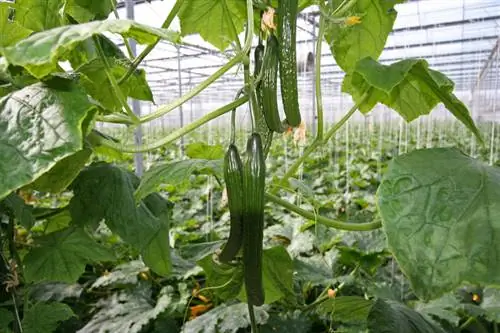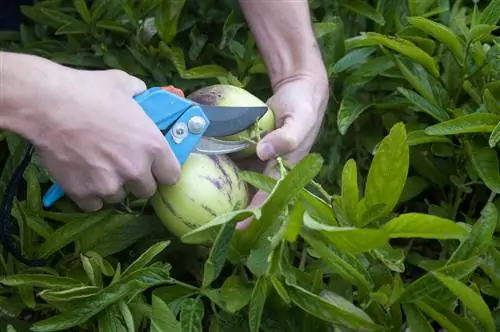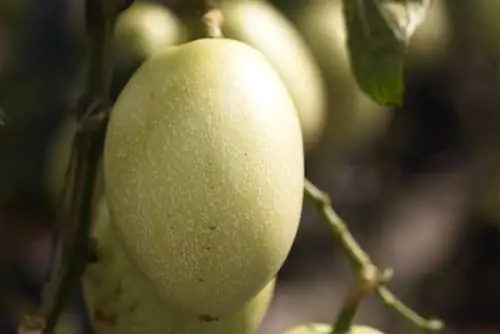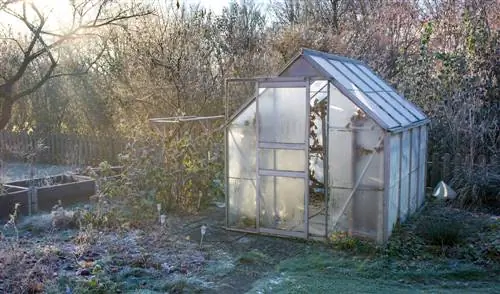- Author admin [email protected].
- Public 2023-12-16 16:46.
- Last modified 2025-01-23 11:22.
A relatively new addition to private fruit cultivation is the melon pear. This is a perennial nightshade plant that originates from South America. Cultivation in our climate requires a lot of care. As a reward for the effort, a special taste experience awaits.
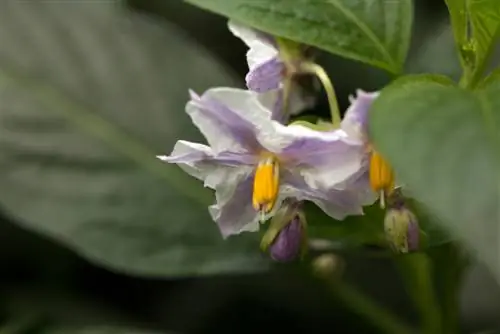
How to properly care for a melon pear?
Caring for a melon pear requires regular watering with low-lime water, low-nitrogen fertilization, thinning and pruning, and pest control. When overwintering, it should be kept bright and cool at 10 °C and only watered lightly.
Daily watering work in summer
As soon as the melon pear, also called Pepino, starts its annual growth in May, it needs a lot of water until October. Not only does it require quantity, the quality should also be right. Here is an overview in bullet points:
- the earth must always remain moist
- However, no moisture may accumulate
- if applicable. Place stones between the pot and the planter as spacers
- low-calcium, soft water is preferred
- z. B. Rainwater or (chemical-free) pond water
- water only moderately in winter so that the soil does not dry out completely
Provide nutrients during the growth phase
If you replant a melon pear, botanically Solanum muricatum, or repot an existing specimen after wintering, the soil will have enough nutrients for around 4-8 weeks. Provided you have bought rich soil or added compost. In addition, bi-weekly low-nitrogen fertilization makes sense:
- fertilize from May to October
- with a complete fertilizer for fruit or vegetables
- alternatively with mature compost
- Stinging nettle manure is also ideal
Tip
A Pepino that is watered with pond water may require less fertilizer. Because the feces of aquatic animals, parts of plants and the remains of animal feed enrich it with nutrients.
Cutting and thinning for a better harvest
By cutting back, the plant remains vital and the harvest is more abundant. You can also influence the size of the fruit with scissors.
- extend to flowering time
- d. H. remove all flowerless shoots
- other shoots then produce more flowers
- Short shoots for larger fruits
- remove damaged and dead shoots
- always cut on dry days
Tip
If you cut back heavily, for example to limit the size of the plants, you should sprinkle the numerous cut surfaces with charcoal ash. This means they dry more quickly and the wounds close quickly.
Check for pests and diseases
As a nightshade plant, the melon pear must be protected from diseases and pests that also affect well-known nightshade plants such as potatoes or tomatoes. Early detection increases the chances of successful control. Check the plant regularly for lice and Colorado potato beetles, as well as changes that may indicate potato powdery mildew or another disease.
Repotting after wintering
Since the melon pear is not hardy, it is usually cultivated in a large container. After a year, the soil is no longer fresh and should be replaced with new one. This is a good opportunity to give the plant a slightly larger pot. The best time for annual repotting is when you leave the winter quarters.
Perennial only with safe overwintering
You cannot overwinter a melon pear outside because even the slightest frost will destroy it. If you are content with one-year cultivation, that is where the care ends. Otherwise, bring the plant into a bright room at around 10 °C, where it must stay until around mid-May. During wintering, water the Pepino with a little water every now and then.


